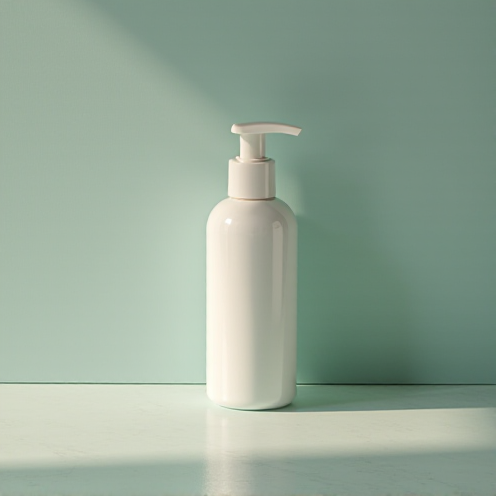Efatop Lotion
Product Info
| Prescription required | No |
| Marketer | Adcock Ingram Healthcare Pvt Ltd |
| Active Ingredient | Clindamycin (NA) |
| Storage | Store below 30°C |
| Chemical Class | Lincomycin |
| Habit Forming | No |
| Therapeutic Class | ANTI INFECTIVES |
| Action Class | Lincosamides |
| User Rating | 4.5 |
| User Reviews | 715 |
FAQ
















Efatop Lotion Reviews
Efatop works by stopping the growth of bacteria. This helps to improve your symptoms and cure the underlying infection. It may be taken with or without food, but it should be used regularly at evenly spaced intervals as per the schedule prescribed by your doctor. Taking it at the same time every day will help you to remember to take it. Your doctor will decide the correct dose for you. Do not skip any doses and finish the full course of treatment even if you feel better. Stopping the medicine too early may lead to the infection returning or worsening.
The most common side effects of this medicine include stomach pain, nausea, vomiting, and diarrhea. These are usually mild but let your doctor know if they bother you or do not go away.
Before using it, you should tell your doctor if you have any liver or kidney problems, if you have any problems with your bowels (intestines) or if you have ever had bloody diarrhea caused by taking antibiotics. You should also let your healthcare team know all other medicines you are taking as they may affect, or be affected by this medicine. Pregnant and breastfeeding mothers should consult their doctor before using it.
How Efatop Lotion Works
How to Use Efatop Lotion
Benefits of Efatop Lotion
- In Treatment of Acne: Efatop is an antibiotic that works by stopping the growth of bacteria causing acne on your skin. It may take several weeks before your symptoms improve so you need to keep using this medicine even if it appears not to be working. Sometimes acne may get worse before it gets better, however, with proper use, your skin will get clearer. The earlier you start using it, the less likely you are to get scars.
- In Treatment of Bacterial infections: Efatop is a versatile antibiotic medicine that works by stopping the growth of bacteria in your body. This medicine is used to treat many different types of infections such as those of lungs (pneumonia), stomach, skin & soft tissues, bones & joints, blood, and heart.This medicine usually makes you feel better within a few days, but you should continue taking it as prescribed even when you feel better. Stopping it early may make the infection come back and harder to treat.
Uses of Efatop Lotion
- Treatment of Acne
- Treatment of Bacterial infections
Efatop Lotion Side Effects

Safety Tips
Quick Tips
- You have been prescribed Efatop for the treatment of acne.
- Avoid contact with your eyes, nose, or mouth. Rinse it off with water if you accidentally get the cream in these areas.
- It may cause minor burning, stinging, or irritation when applied. Inform your doctor if this does not go away.
- If you think the area of skin you are treating has become more irritated and infected, you should stop using Efatop and consult your doctor.
- You may have to use it for a long time before your acne starts to improve. Be patient and keep using it every day.
- Apply it as a thin layer onto clean, dry, unbroken skin affected by acne.
- Wash your skin with a mild cleanser and pat it dry before applying Efatop.
References
- MacDougall C, Chambers HF. Protein Synthesis Inhibitors and Miscellaneous Antibacterial Agents. In: Brunton LL, Chabner BA, Knollmann BC, editors. Goodman & Gilman’s: The Pharmacological Basis of Therapeutics. 12th ed. New York, New York: McGraw-Hill Medical; 2011. pp. 1534-35.
- Clindamycin phosphate [Package Leaflet]. Zaventem, Belgium: Pfizer Service Company BV; 2023.
- Briggs GG, Freeman RK, editors. A Reference Guide to Fetal and Neonatal Risk: Drugs in Pregnancy and Lactation. 10th ed. Philadelphia, PA: Wolters Kluwer Health; 2015. pp. 292-93.
- Chambers HF, Deck DH. Tetracyclines, Macrolides, Clindamycin, Chloramphenicol, Streptogramins, & Oxazolidiones. In: Katzung BG, Masters SB, Trevor AJ, editors. Basic and Clinical Pharmacology. 11th ed. New Delhi, India: Tata McGraw Hill Education Private Limited; 2009. pp. 801-802.
- Chaves RG, Lamounier JA. Breastfeeding and maternal medications. J Pediatr (Rio J). 2004;80(5 Suppl):S189-98.
- Drugs.com. Clindamycin Pregnancy and Breastfeeding Warnings.
- Central Drugs Standard Control Organisation (CDSCO).
